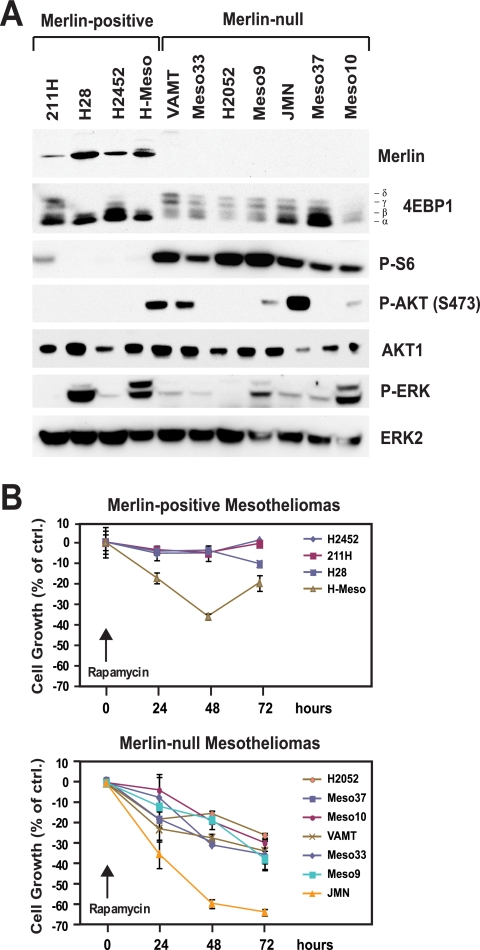FIG. 6.
Loss of merlin correlates with activation of mTORC1 signaling and sensitivity to rapamycin in malignant mesothelioma. (A) Lack of expression of merlin correlates with activation of mTORC1 but not AKT or ERK. The indicated mesothelioma cell lines were cultured in complete medium, and equal amounts of total proteins were subjected to immunoblotting using antibodies to the indicated antigens. P-S6, phosphorylated S6; P-AKT (S473), AKT phosphorylated at S473; P-ERK, phosphorylated ERK. (B) Lack of expression of merlin correlates with sensitivity to rapamycin. The indicated mesothelioma cell lines were plated at subconfluent densities into complete medium and treated with 1 nM rapamycin or vehicle alone for the indicated times. The number of viable cells at each time point was estimated by using the crystal violet assay. The graphs show the percentages of cells remaining viable in the presence of rapamycin relative to the number of control cells (ctrl.) cultured in the absence of the drug. The results at 72 h were subjected to Student's t test to assess the statistical significance of the differential sensitivities of merlin-negative mesothelioma cell lines to the growth-inhibitory effect of rapamycin (P = 0.0018). The average doubling times of merlin-positive and of merlin null mesothelioma lines were not dissimilar (merlin positive, 48.5 h; merlin null, 44.1 h).

